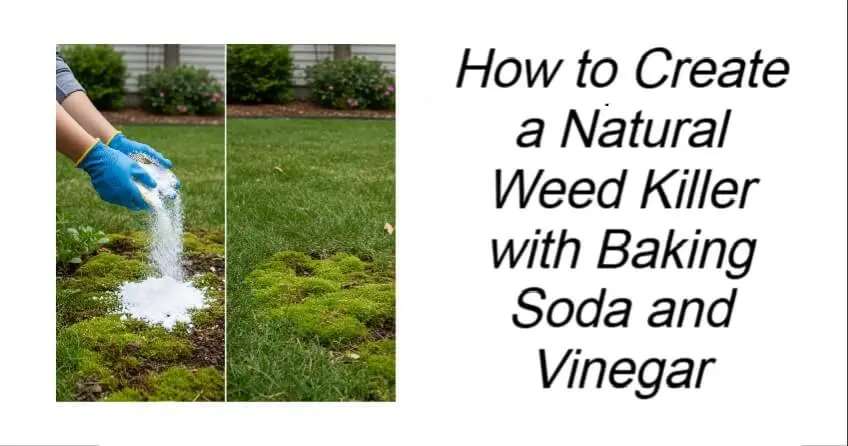How to Create a Natural Weed Killer with Baking Soda and Vinegar
Weeds are the uninvited guests of every garden. They sneak into flower beds, vegetable patches, and patios, competing with your plants for nutrients, space, and sunlight. While chemical herbicides may offer a quick fix, they often come with environmental and health concerns.
Fortunately, there are effective, natural alternatives hiding right in your kitchen—baking soda and white vinegar. These two common household staples can help you manage weeds without compromising your garden’s health or the planet’s well-being.
Why Choose Natural Weed Control?
Using chemical weed killers can lead to soil contamination, water pollution, and harm to pets, pollinators, and other beneficial wildlife. Natural methods, on the other hand, offer a safer, eco-friendly way to maintain a thriving garden. Plus, they’re often cheaper and already sitting in your pantry.
How to Use Baking Soda to Kill Weeds
Method:
- Lightly moisten the weeds with water.
- Sprinkle about 1 teaspoon of baking soda directly onto each weed.
- Focus on areas like cracks in patios, driveways, or walkways, where weeds commonly sprout.
Application Tips:
- Avoid sprinkling baking soda near grass or desirable plants—it may affect their growth.
- Reapply after a few days if the first treatment isn’t fully effective.
How to Use White Vinegar as a Natural Herbicide
DIY Vinegar Weed Killer Spray
- Ingredients:
- 2 cups white vinegar (5–10% strength)
- 2 tablespoons dish soap
- Spray bottle
How It Works:
- The acetic acid in vinegar dries out the plant, while the dish soap helps it stick to the leaves.
- Application: Spray the mixture directly onto the weeds on a sunny day for best results.
Note: Vinegar works best on young, small weeds and may need repeat treatments for tougher growth.
Combine Baking Soda and Vinegar for Extra Strength
Power Combo Method:
- In a spray bottle, mix:
- 1 part baking soda
- 2 parts white vinegar
- 1 tablespoon dish soap
- Allow the fizzy reaction to subside, then spray thoroughly onto weeds.
Alternate Technique:
Sprinkle baking soda first, then spray with vinegar for a dramatic and immediate effect.
Caution: This combination is potent—avoid using near plants you want to keep. It may also temporarily affect soil fertility, so use it sparingly and only where regrowth is not a concern.
Bonus Natural Weeding Tips
- Hand-Pulling: Still the most effective and instant method—especially right after a rain when soil is soft.
- Boiling Water: Pour directly onto weeds to kill roots instantly. Use a kettle for precision.
- Proper Lawn Maintenance: Keep grass trimmed to 7.5–8 cm—this naturally shades out many weeds.
- Essential Oils: Oils like clove, thyme, cinnamon, and savory can break down weed cell walls, especially under sunlight.
FAQ
What strength of vinegar works best?
Use 5–10% vinegar for most home garden weeds. For stubborn or mature weeds, horticultural vinegar (20%+) may be required—but handle with care.
Can vinegar and baking soda harm the soil?
In high doses, yes. These substances can lower soil pH and disrupt microbial life. Use them selectively and sparingly, especially in garden beds.
Are natural methods as effective as commercial weed killers?
Natural solutions often take more time and repeat applications but can be just as effective—without the toxic side effects.
Weed Wisely, Naturally
Whether you’re maintaining a vegetable garden, flower bed, or patio, weeds are inevitable—but harsh chemicals don’t have to be. With simple ingredients like baking soda and vinegar, you can tackle unwanted growth while protecting your health and the environment.
Choose natural, safe methods and take pride in a thriving garden that’s beautiful, sustainable, and chemical-free.
You’ve just read, How to Create a Natural Weed Killer . Why not read Husbands Tries To Get Clever With His Wife

